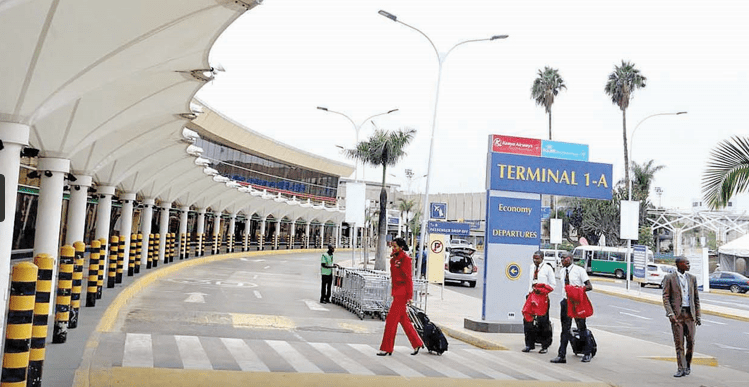Skies reimagined: How AI is fast changing Kenya’s aviation future

A silent transformation is taking place above Kenya—one powered by algorithms, not altitude.
From facial recognition at Jomo Kenyatta International Airport (JKIA) to predictive maintenance on Kenya Airways jets, artificial intelligence (AI) is reengineering how the country flies. This shift isn’t a future aspiration—it’s happening now, with real systems, real savings, and real stakes.
At the heart of this revolution is Kenya Airways (KQ), which is embedding AI into every layer of its operations. AI chatbots are poised to resolve a majority of customer service inquiries, slashing response times and freeing up agents for complex issues.
Behind the scenes, predictive maintenance tools will be using sensor data to forecast equipment failure before it happens, cutting costs and minimizing delays.
Partnering with Safaricom, KQ is also testing IoT-powered systems for baggage tracking and onboard connectivity—laying the groundwork for a fully digitised fleet and customer experience.
In a post-Covid market where efficiency defines survival, AI is becoming KQ’s co-pilot. At JKIA, security queues are giving way to biometric corridors. Facial recognition, fingerprint scanning, and AI-powered surveillance are accelerating passenger flow and tightening access control.
For travellers, it means fewer queues and faster boarding. For regulators, it offers real-time threat detection without compromising civil liberties. A recent study at JKIA confirmed what travellers already suspect: AI-enabled processing systems drastically reduce waiting times and elevate trust in airport security.
In high-volume terminals, such precision isn’t a luxury—it’s a necessity. AI is also powering the brains behind the airport. Dynamic check-in kiosks, AI traffic prediction tools, and autonomous baggage handling systems are reducing human error and smoothing operations. Algorithms analyse passenger behaviour in real time to manage crowd flows and optimise gate allocations. These upgrades aren’t cosmetic—they are essential.
With passenger numbers set to exceed pre-pandemic levels, Kenya’s aviation infrastructure must scale smartly or face systemic bottlenecks. These efforts align with Kenya’s National Artificial Intelligence Strategy 2025–2030, which explicitly identifies aviation as a high-impact sector for AI deployment. The strategy prioritises intelligent infrastructure, data governance, and ethical standards for deployment.
Aviation provides the proving ground—and the payoff is visible. By integrating AI into a national policy agenda, Kenya is doing more than deploying technology. It’s defining the future of public infrastructure in Africa—where innovation is locally grounded, ethically guided, and globally competitive.
Kenya’s progress in AI-powered aviation doesn’t exist in a vacuum. With the African Airlines Association (AFRAA) pushing for digital transformation across the continent, Kenya is emerging as a model.
Its biometric systems, predictive logistics, and AI-aligned policy environment offer a playbook for peer countries seeking to modernise without replicating Western templates. This leadership matters. The African aviation sector has long struggled with inefficiencies, underinvestment, and fragmented regulation. Kenya’s approach demonstrates how local ingenuity and strategic partnerships can rewrite that narrative. AI is not replacing aviation professionals—it’s enhancing them. It’s making pilots safer, airports smarter, and airlines more agile. As Kenya’s skies grow busier, intelligence—not just infrastructure—will determine success.
The next decade of African air travel will be defined by those who act now. Kenya has entered that airspace, not just with ambition, but with architecture. The flight plan is clear. The runway is built. The systems are learning. The only question is: Who’s ready for takeoff?
The Writer is a Data Scientist at UNEP and AI and Climate Policy Strategist















